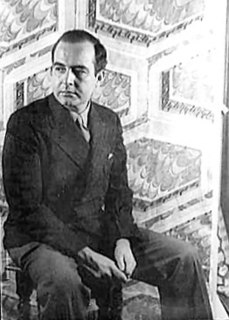
Lamb of God is a title for Jesus that appears in the Gospel of John. It appears at John 1:29, where John the Baptist sees Jesus and exclaims, "Behold the Lamb of God who takes away the sin of the world." It appears again in John 1:36.

The Worshipful Company of Tallow Chandlers is one of the ancient livery companies of the City of London. The organisation, which engaged not only in tallow candle making but also in the trade of oils, first received a Royal Charter in 1462.

"Gloria in excelsis Deo" is a Christian hymn known also as the Greater Doxology and the Angelic Hymn/Hymn of the Angels. The name is often abbreviated to Gloria in Excelsis or simply Gloria.

Missa in tempore belli, Hob. XXII/9, is a setting of the mass by Joseph Haydn. It is catalogued Mass No. 10 in C major,. Known also as the Paukenmesse due to the dramatic use of timpani, it is one of the most popular of his fourteen mass settings. The autograph manuscript contains the title "Missa in tempore belli" in Haydn's handwriting.
The ordinary, in Roman Catholic and other Western Christian liturgies, refers to the part of the Eucharist or of the canonical hours that is reasonably constant without regard to the date on which the service is performed. It is contrasted to the proper, which is that part of these liturgies that varies according to the date, either representing an observance within the liturgical year, or of a particular saint or significant event, and to the common, which contains those parts that are common to an entire category of saints, such as apostles or martyrs.
Antonio Vivaldi wrote at least three settings of the hymn Gloria in excelsis Deo, whose words date probably from the 4th Century and which is an integral part of the Ordinary of the Mass. Two survive: RV 588 and RV 589. A third, RV 590, is mentioned only in the Kreuzherren catalogue and presumed lost. The RV 589 Gloria is a familiar and popular piece among sacred works by Vivaldi. It was probably written at about the same time as the RV 588, possibly in 1715.

Agnus Dei is a choral composition in one movement by Samuel Barber, his own arrangement of his Adagio for Strings (1936). In 1967, he set the Latin words of the liturgical Agnus Dei, a part of the Mass, for mixed chorus with optional organ or piano accompaniment. The music, in B-flat minor, has a duration of about eight minutes.

The Divine Service is a title given to the Eucharistic liturgy as used in the various Lutheran churches. It has its roots in the pre-Tridentine Mass as revised by Martin Luther in his Formula missae of 1523 and his Deutsche Messe of 1526. It was further developed through the Kirchenordnungen of the sixteenth and seventeenth centuries that followed in Luther's tradition.
Preces are, in liturgical worship, short petitions that are said or sung as versicle and response by the officiant and congregation respectively. This form of prayer is one of the oldest in Christianity, finding its source in both the pre-Christian Hebrew prayers of the Psalms in Temple Worship,

In Christian liturgy the elevation is a ritual raising of the consecrated elements of bread and wine during the celebration of the Eucharist. The term is applied especially to that by which, in the Roman Rite of Mass, the Host and the Chalice are each shown to the people immediately after each is consecrated. The term may also refer to a piece of music played on the organ or sung at that point in the liturgy.

"Dona nobis pacem" is a song with Latin text, often sung as a canon or round.
The Mass No. 13 in B-flat major, Hob. XXII/13, was composed by Joseph Haydn in 1801. It is known as the Schöpfungsmesse or Creation Mass because of the words "Qui tollis peccata mundi" in the Gloria, Haydn recycled music from the Adam and Eve's final duet in The Creation, a fact which scandalized Empress Maria Theresa so much that she ordered Haydn to recompose that passage for her own copy of the work.
Michael Haydn's Missa Hispanica or Missa a due cori, Klafsky I:17, MH 422, was presumably written for Spain, but there is no evidence of its ever having been performed there during Haydn's lifetime. The mass is scored for 2 oboes, 2 bassoons, 2 horns in low C, F and G, 2 trumpets in C, timpani, strings, basso continuo, SATB soloists, and two mixed choirs.
Order of Mass is an outline of a Mass celebration, describing how and in what order liturgical texts and rituals are employed to constitute a Mass.

Agnus Dei, referring to the Christian theological concept of the Lamb of God and the associated liturgical text from the Roman Catholic Latin Mass, has been set to music by many composers, as it is normally one of the movements or sections in a sung Mass setting. However, sometimes it stands alone, e.g. it provides the lyrics for Samuel Barber's Agnus Dei, the choral arrangement of his Adagio for Strings.
Missa Sanctissimae Trinitatis in A minor, ZWV 17, is the vocal-instrumental sacred work, written by Czech Baroque composer Jan Dismas Zelenka. It was completed in 1736 as the first of five "High Mass" compositions he wrote in the last ten years of his life. Last three were also called "Missae ultimae".

The Middleham Jewel is a late 15th-century gold pendant, set with a large blue sapphire stone. Each side of the lozenge-shaped pendant is engraved with a religious scene. It was discovered by a metal detectorist in 1985 near Middleham Castle, the northern home of Richard III, and acquired by the Yorkshire Museum in York for £2.5 million.

The Missa longa in C major, K. 262/246a, is a mass composed by Wolfgang Amadeus Mozart in May 1776. It is scored for SATB soloists, SATB choir, violin I and II, 2 oboes, 2 horns, 2 clarini, 3 trombones colla parte, timpani and basso continuo.
The Missa secundi toni is a mass by Johann Ernst Eberlin. He wrote it for the Salzburg Cathedral, and scored it for four soloists, a four-part choir, two violins and continuo.











